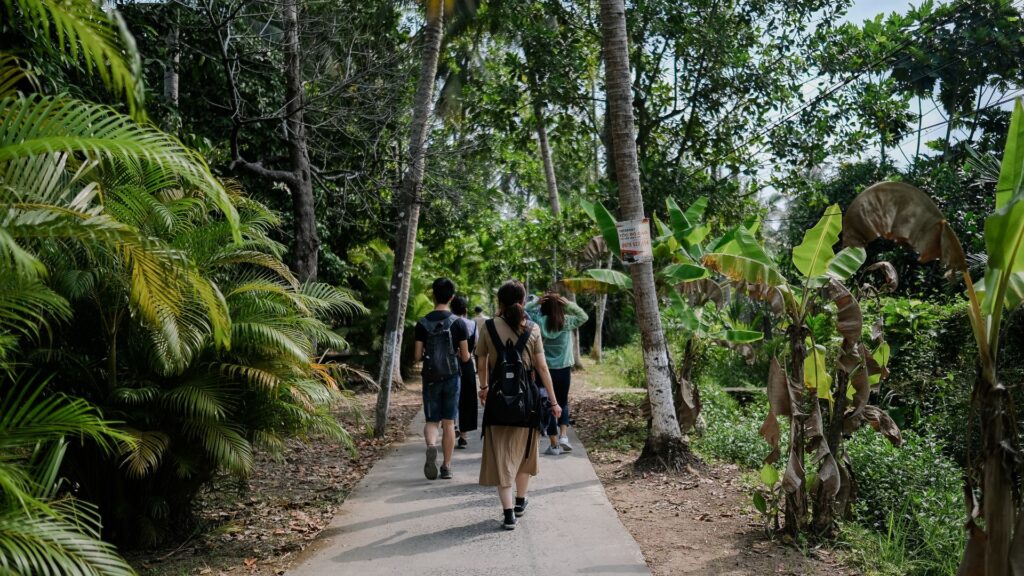Integrating Tourism into NDCs: Challenges for SMEs and the Role of Forest Friends and Green Initiative
Tourism, responsible for approximately 8-10% of global greenhouse gas (GHG) emissions, holds significant potential for climate action. Integrating tourism into Nationally Determined Contributions (NDCs) under the Paris Agreement is a promising pathway to reduce emissions and promote sustainable development. However, this opportunity comes with challenges, especially for small and medium-sized enterprises (SMEs), which dominate the tourism sector. SMEs often lack the resources, technical expertise, and financial capacity to implement sustainable practices effectively. At Forest Friends and Green Initiative, we are committed to addressing these challenges by providing innovative tools, reforestation solutions, and tailored support to empower SMEs as key players in climate action. https://youtu.be/_n2mXeP3wh4 The Importance of Integrating Tourism into NDCs Tourism is a critical sector for global economies, supporting livelihoods and cultural exchange. Yet, its contribution to GHG emissions demands urgent action. By integrating tourism into NDCs, countries can: Address emissions from transportation, accommodation, and activities. Leverage the sector’s influence to promote sustainable practices. Enhance biodiversity and ecosystem restoration through initiatives like reforestation. SMEs’ agility, community ties, and innovative potential position them as pivotal players in combating climate change. Unlike larger corporations, SMEs can adopt changes more quickly and directly engage with local communities to implement impactful, sustainable practices. Challenges for SMEs in Achieving Climate Goals Limited Technical CapacityMany SMEs lack the expertise to measure and manage their carbon footprint. Complex regulatory frameworks and technical jargon often hinder participation in climate action. Financial ConstraintsImplementing sustainable technologies, such as renewable energy or energy-efficient infrastructure, requires significant upfront investment—often beyond the reach of SMEs. Knowledge and Awareness GapsMany SMEs are unaware of best practices for sustainability and struggle to find accessible, actionable guidance. Fragmented Support SystemsTourism is frequently overlooked in national climate plans, leaving SMEs with insufficient resources to contribute meaningfully to NDCs. How Forest Friends and Green Initiative Are Helping SMEs Lead in Climate Action Through targeted programs and resources, Forest Friends and Green Initiative enable SMEs to overcome these barriers and thrive as sustainable businesses. Reforestation ProgramsForest Friends connects tourism SMEs with reforestation initiatives that offset their emissions while restoring biodiversity. These programs empower businesses to contribute directly to climate mitigation. User-Friendly ToolsGreen Initiative offers practical tools, such as carbon footprint calculators and sustainability certification frameworks, tailored to the needs of SMEs. These tools simplify compliance with NDCs and global standards. Capacity BuildingBoth organizations provide workshops, training, and mentorship programs designed to build the technical expertise of SMEs, making sustainable practices accessible and achievable. Financial PathwaysBy advocating for green financing options, including grants, carbon credit programs, and subsidies, we help SMEs access the resources they need to invest in sustainable technologies. Success Stories: SMEs Leading the Way Several SMEs have successfully aligned their operations with sustainability goals through our initiatives. For example: Kuoda Travel has embraced carbon footprint reduction measures and supports reforestation projects through Forest Friends. WorldXchange, the first Climate Positive Certified currency exchange company, demonstrates how businesses of all sizes can lead in climate action. and many more… Building a Collaborative Future To integrate tourism into NDCs effectively, governments, businesses, and sustainability organizations must work together. Key actions include: Simplifying Policy FrameworksGovernments must create tourism-specific policies within NDCs, reducing complexity for SMEs. Providing IncentivesTax credits, grants, and recognition programs can encourage SMEs to adopt sustainable practices. Fostering Public-Private PartnershipsCollaborative models, like those between Forest Friends and Green Initiative, amplify impact and foster innovation. A Call to Action for Tourism SMEs Tourism has the power to become a cornerstone of global climate solutions. By addressing the challenges faced by SMEs and leveraging reforestation, capacity-building programs, and financial support, we can transform the sector into a leader in sustainability. At Forest Friends, we are dedicated to making this vision a reality. Together with SMEs, governments, and global partners, we can create a tourism sector that thrives economically while contributing to a healthier planet. Explore more at Forest Friends Knowledge Hub. Join us in turning challenges into opportunities for a greener future!


